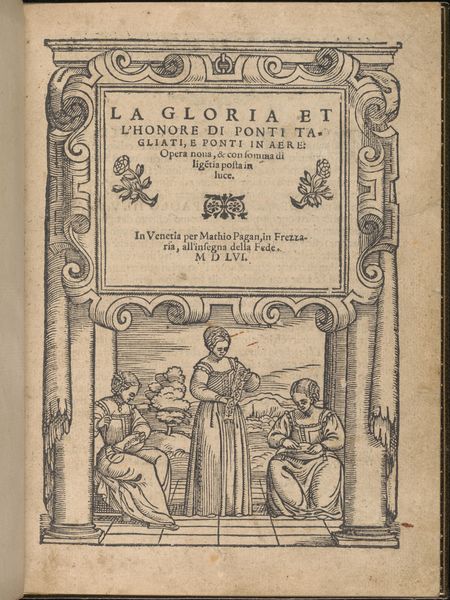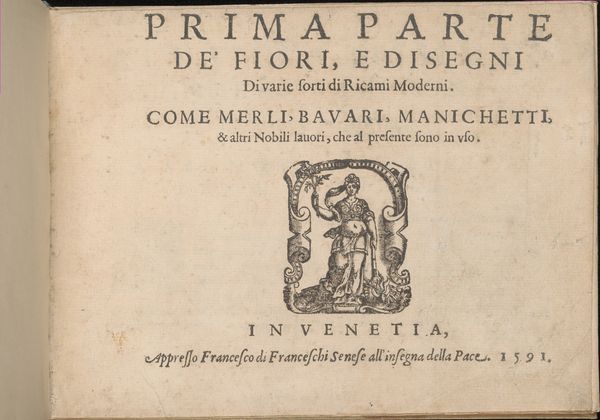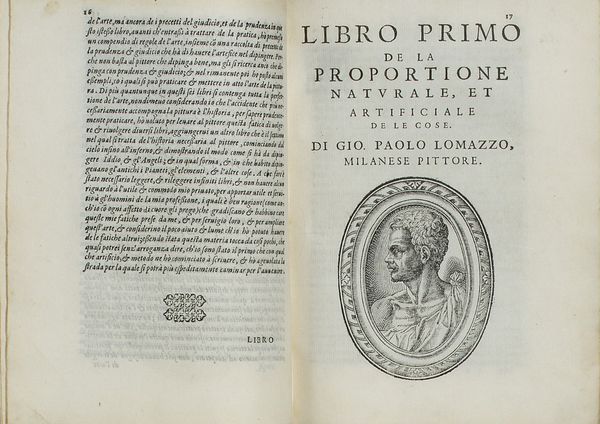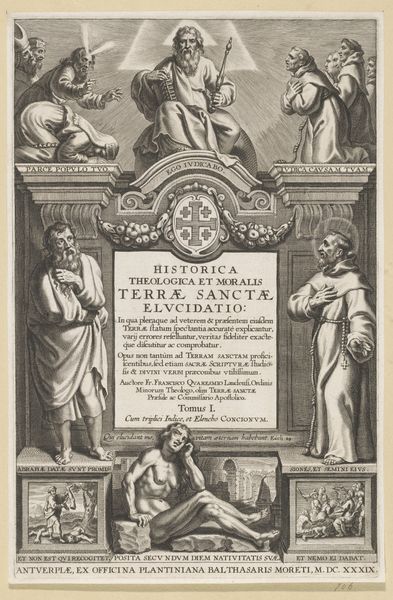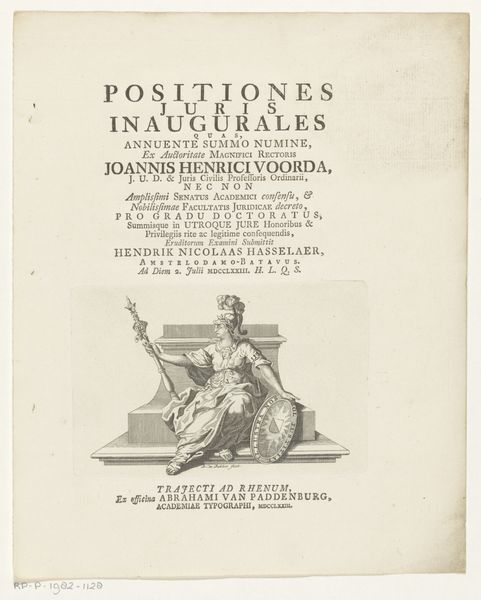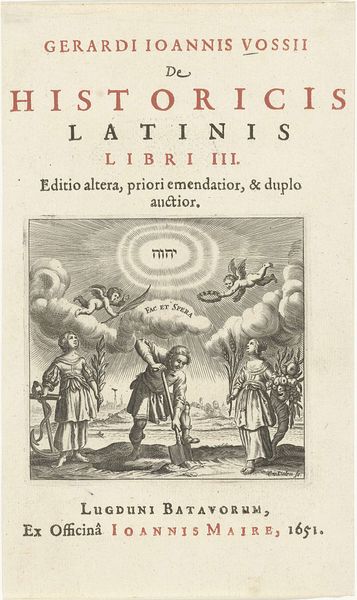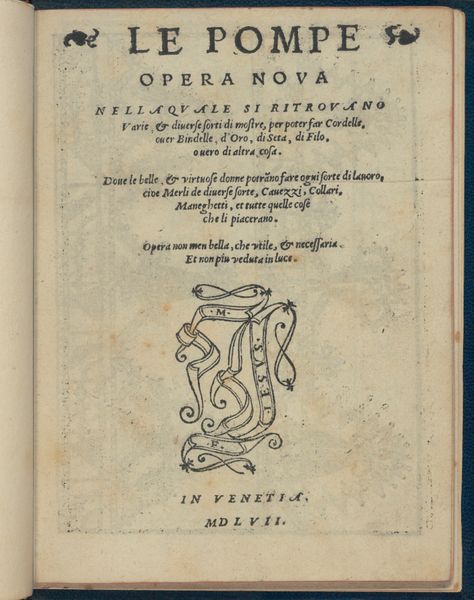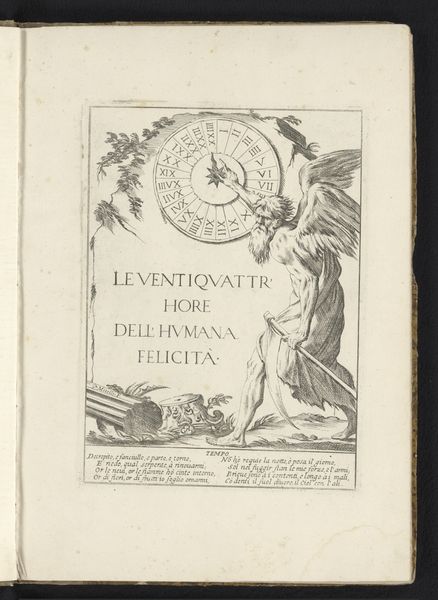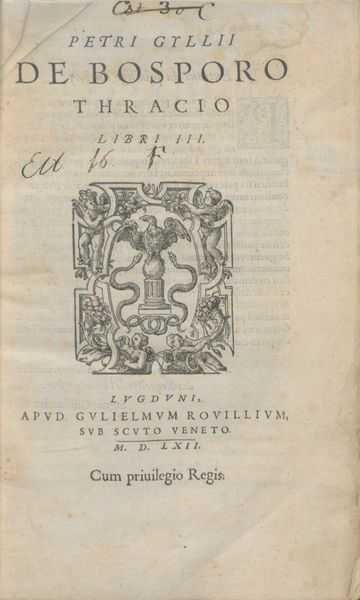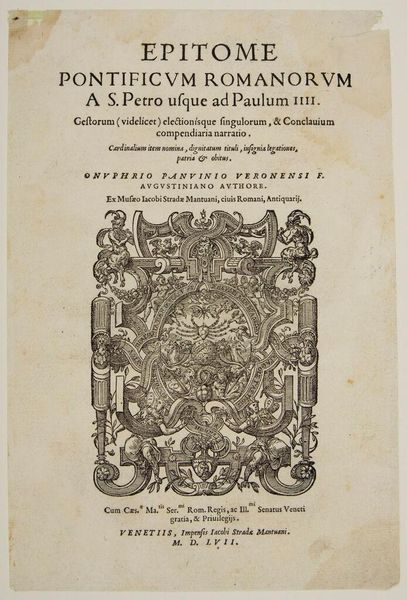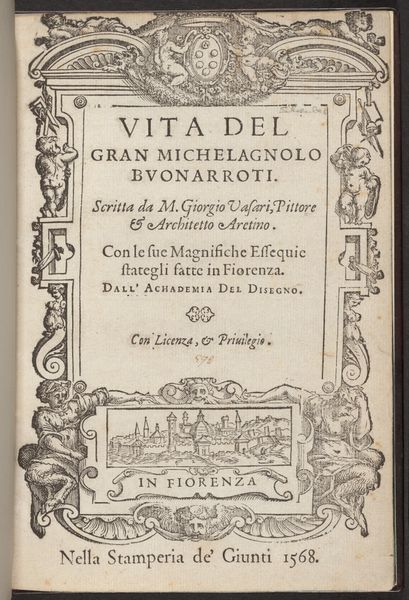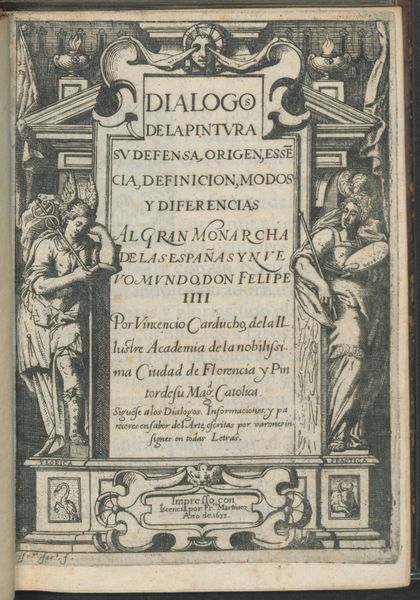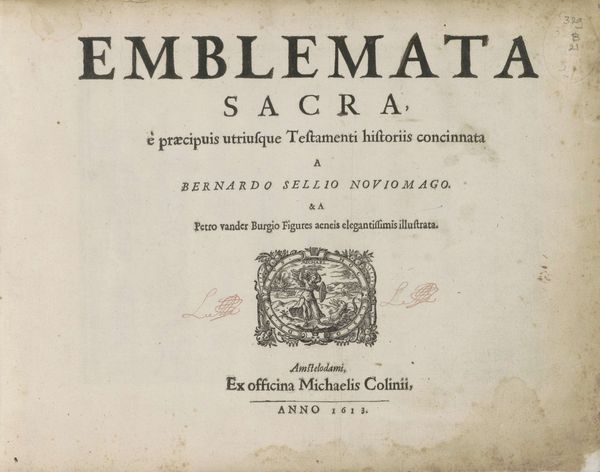
'Regole per Imparar a Disegnar i corpi humani ... Giacomo Palma' Libro Primo (title page and 7 plates), bound together with Libro Secondo (title page and 11 plates) 1636
0:00
0:00
drawing, print, engraving
#
drawing
#
baroque
# print
#
figuration
#
history-painting
#
engraving
Dimensions: 14 3/16 × 9 13/16 × 5/16 in. (36 × 25 × 0.8 cm)
Copyright: Public Domain
Curator: Let's explore this striking engraving from 1636. It is Jacopo Palma the Younger’s title page and plates, bound together, from "Regole per Imparar a Disegnar i corpi humani…", housed here at the Metropolitan Museum. Editor: Immediately, I'm struck by the dynamism and contrast. There’s such a dramatic interplay between the rigid, ordered text at the top and the fluid, almost chaotic arrangement of figures at the bottom. It sets up an intriguing tension between intellect and physicality. Curator: Palma’s images here reveal the influence of classical antiquity, the cornerstone for proper artistic study, depicting nude figures that serve as models for aspiring artists. You'll see similar elements on other plates of his series on view in the next room. Note the juxtaposition of the classical with the more baroque treatment of the figures' flowing hair and theatrical poses. Editor: The line work is remarkable, a dense network of hatched lines that build form and shadow. Look at how that builds volume on the central male figure, versus the female, whose clothing nearly obscures it. It suggests that, in this artistic system, the unadorned male nude is the peak to aspire to and study. Curator: It also illustrates a classical concept called contrapposto, notice the distribution of weight creating a natural, relaxed stance and suggesting potential for movement? He balances both ideals; one of idealized classical form but executed with dynamism appropriate for the Baroque period. Palma is communicating tradition but simultaneously advancing it, isn’t he? Editor: Precisely! Also, below the seated male figure, we find the presence of a single skull and discarded tools on the floor that emphasize this tension of how ephemeral life is in relation to an object’s formal timelessness, a warning against earthly vanity in pursuit of perfection. The arrangement feels almost like a philosophical diagram as well as instruction for drawing, wouldn’t you say? Curator: A valuable perspective. Thinking about the context, Venice was a vibrant hub of artistic innovation, where one could absorb these influences, both historical and contemporary. Editor: I leave having pondered how enduring themes of form, instruction, and the symbolism can intertwine in visual art across centuries. Curator: Indeed, the pursuit of beauty and understanding the human form are ageless endeavors, perfectly encapsulated by this arresting image and Palma's ambition as a teacher.
Comments
No comments
Be the first to comment and join the conversation on the ultimate creative platform.
